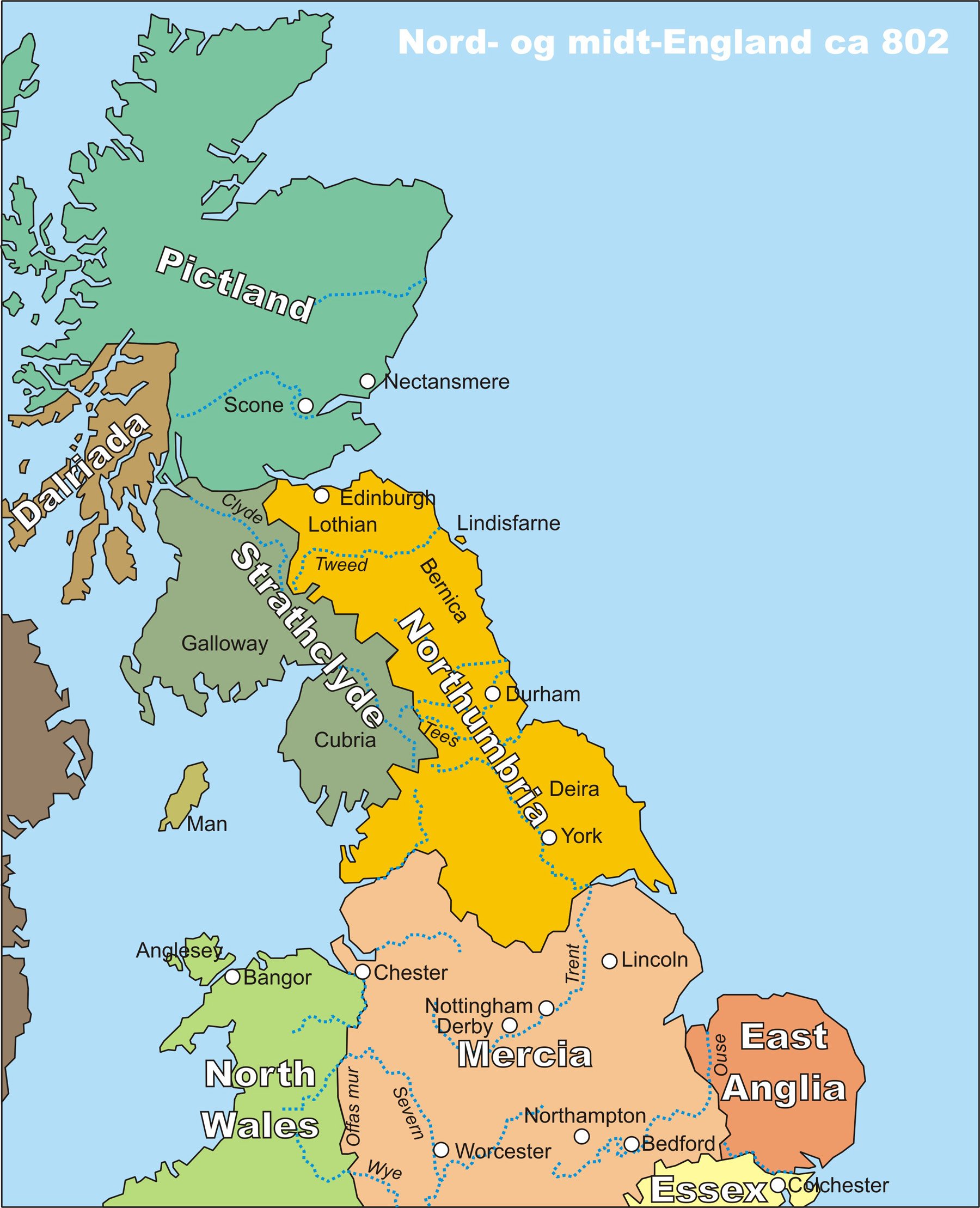Northumbria, Rise and Fall of a Nation
Great Britain was formed of many lesser nations brought (read conquered) together by Wessex, one of the Anglo-Saxon kingdoms. However, what about the other six kingdoms that shared the island? Technically speaking, they weren't precisely seven Anglo-Saxon kingdoms (also known as Heptarchy) as sub-kingdoms, and political division existed. For the sake of convenience, they are referred to as Mercia, East-Anglia, Essex, Kent, Sussex, and the one that interests us today, Northumbria.
Northumbria came into existence around the year 654, when the smaller kingdoms of Bernicia and Deira unified. Both countries were often at odds, most likely over territorial disputes, but were first brought together by Aethelfrith, a king of Bernicia. The details of how he succeeded in unifying them aren't known. However, we do know that around the year 604, he managed to exile the current king of Deira, Edwin, to the court of King Raedwald of Eats-Anglia. This marked the unification of both countries. However, it was a mixed victory, as Edwin managed to befriend the East-Anglian king who, in 616, helped the exiled sovereign strike back at his old rival. The fact that Aethelfrith threatened to attack East Anglia if Raedwald didn't execute Edwin might have helped 'convince' the mentioned king to attack first. Long story short, the Bernecian king was caught off-guard and killed in the River Idle battle, which was quite a lot of action for a river that is literally called "lazy".
Edwin had a little more time on the throne of Northumbria than Aethelfrith before meeting his demise. He died at the battle of Hatfield Chase in 632 against the Mercian – but there is no record of any hats present during the battle (" Hat field"?). This sounded like the temporary collapse of Northumbria before one of Aethelfrith's sons, Oswald, reunified the kingdom for good. Well, at least until the Danes decided to say hello but that's for later.
Following this tumultuous beginning, the following years were relatively peaceful for Northumbria. With minor clashes with its rival Mercia in the south, nothing threatened the tremendous Anglo-Saxon kingdom. After all, it was known to be the overall greatest kingdom of the Heptarchy. Culturally and religiously strong as well, it housed some of the greatest libraries and works of art in western Europe.
However, we all know that Northumbria ultimately collapsed and ended up under the control of Wessex, becoming modern England. But how did the much smaller kingdom manage to overcome such a great foe? The answer is, they didn't. As I stated earlier, the Danes ended up paying a visit to the Anglo-Saxons, a visit that Northumbria did not like at all. Being directly exposed to the Scandinavian invasion didn't really work in the kingdom's favour since it was one of the first of the Heptarchy to fall to the Danelaw. The other kingdoms didn't fare much better. East-Anglia, Essex, Sussex and Kent were completely annihilated. Mercia managed to barely survive the invasion, while surprisingly, Wessex wasn't too much affected. They can thank their neighbours for serving as (literal) meat-shields for this ultimate kind of overall victory.
Ultimately, Wessex and Mercia managed to expel the Danes a few years later. Wessex, of course, thanked its weakened ally by invading them, cementing the rise of the Kingdom of England.

